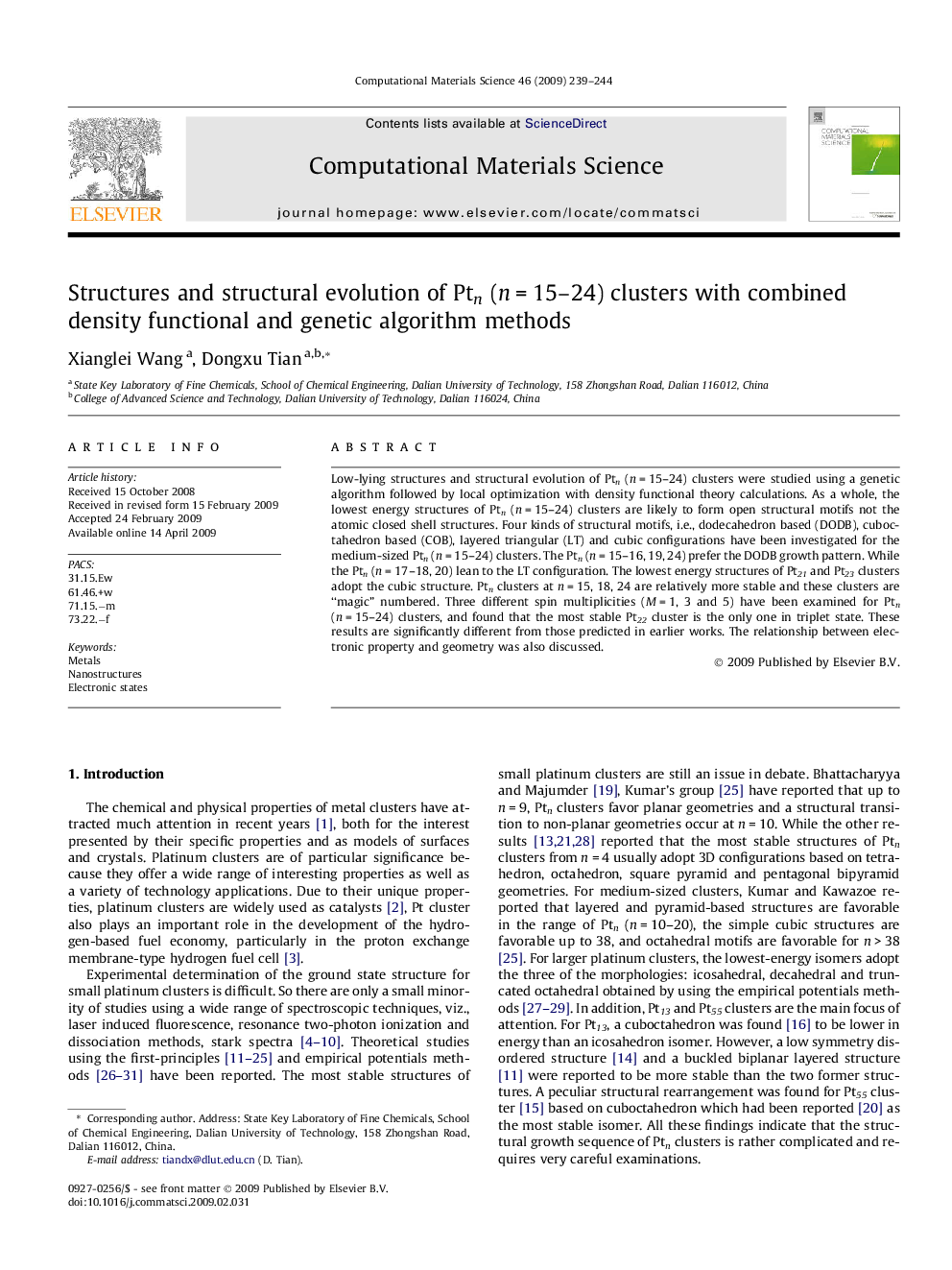| Article ID | Journal | Published Year | Pages | File Type |
|---|---|---|---|---|
| 1563524 | Computational Materials Science | 2009 | 6 Pages |
Abstract
Low-lying structures and structural evolution of Ptn (n = 15-24) clusters were studied using a genetic algorithm followed by local optimization with density functional theory calculations. As a whole, the lowest energy structures of Ptn (n = 15-24) clusters are likely to form open structural motifs not the atomic closed shell structures. Four kinds of structural motifs, i.e., dodecahedron based (DODB), cuboctahedron based (COB), layered triangular (LT) and cubic configurations have been investigated for the medium-sized Ptn (n = 15-24) clusters. The Ptn (n = 15-16, 19, 24) prefer the DODB growth pattern. While the Ptn (n = 17-18, 20) lean to the LT configuration. The lowest energy structures of Pt21 and Pt23 clusters adopt the cubic structure. Ptn clusters at n = 15, 18, 24 are relatively more stable and these clusters are “magic” numbered. Three different spin multiplicities (M = 1, 3 and 5) have been examined for Ptn (n = 15-24) clusters, and found that the most stable Pt22 cluster is the only one in triplet state. These results are significantly different from those predicted in earlier works. The relationship between electronic property and geometry was also discussed.
Related Topics
Physical Sciences and Engineering
Engineering
Computational Mechanics
Authors
Xianglei Wang, Dongxu Tian,
